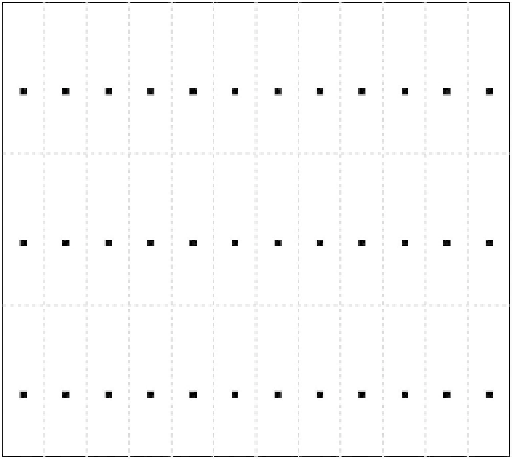Geoscience Reference
In-Depth Information
study area. In the example of Figure 10.5, the desired total of 36 sites was arbi-
trarily arranged into 6 rows and 6 columns, and the number of sample units
in the vertical and horizontal directions was evenly divisible by 6. A differ-
ent configuration of 36 sites arranged in 3 rows of 12 appears in Figure 10.6.
Once block sizes are determined, a random location within the first block is
generated. The site at that location is then selected and the remainder of the
sample is filled with sites in the same relative position from other blocks.
If the study area is an irregular polygon, a systematic sample can be drawn
by laying the (randomized) grid of sample sites over an outline of the study
area and choosing grid points that fall inside. This process of intersecting a
randomized grid and a nonrectangular study area produces unequal sample
sizes because different numbers of sites fall in the study area depending on
the randomization, but other than logistical difficulties, varying numbers of
sample sites do not pose problems for analysis. Under systematic sampling,
the inclusion of units is not independent. Given the identity of one unit in the
sample, the identities of all other units in the sample are known.
Systematic samples are good designs for monitoring studies. They are use-
ful for monitoring because the realized sample has good spatial balance.
However, systematic sampling suffers because the realized sample size
is usually variable, and it can be difficult to replace sample sites that are
inaccessible or inappropriate. If a site is inaccessible or inappropriate and
researchers wish to replace it with another, it is difficult to decide where
FIGURE 10.6
Example of a 3 × 12 systematic sample with random start. Dashed lines indicate blocks of sec-
ondary units (sites) from which a single unit is selected. The set of sites in the same relative
position in each block constitutes a cluster.

